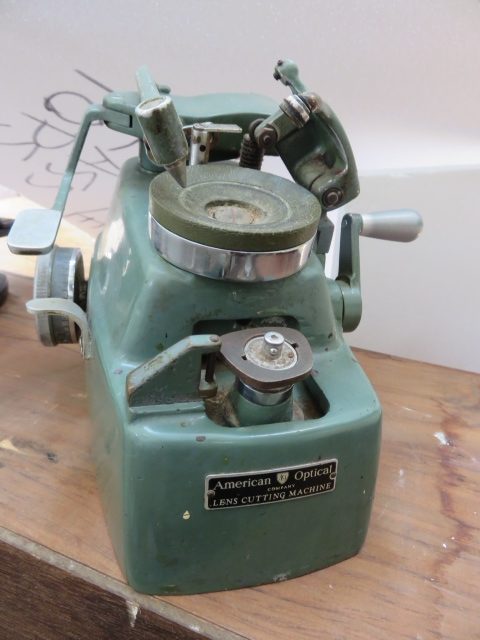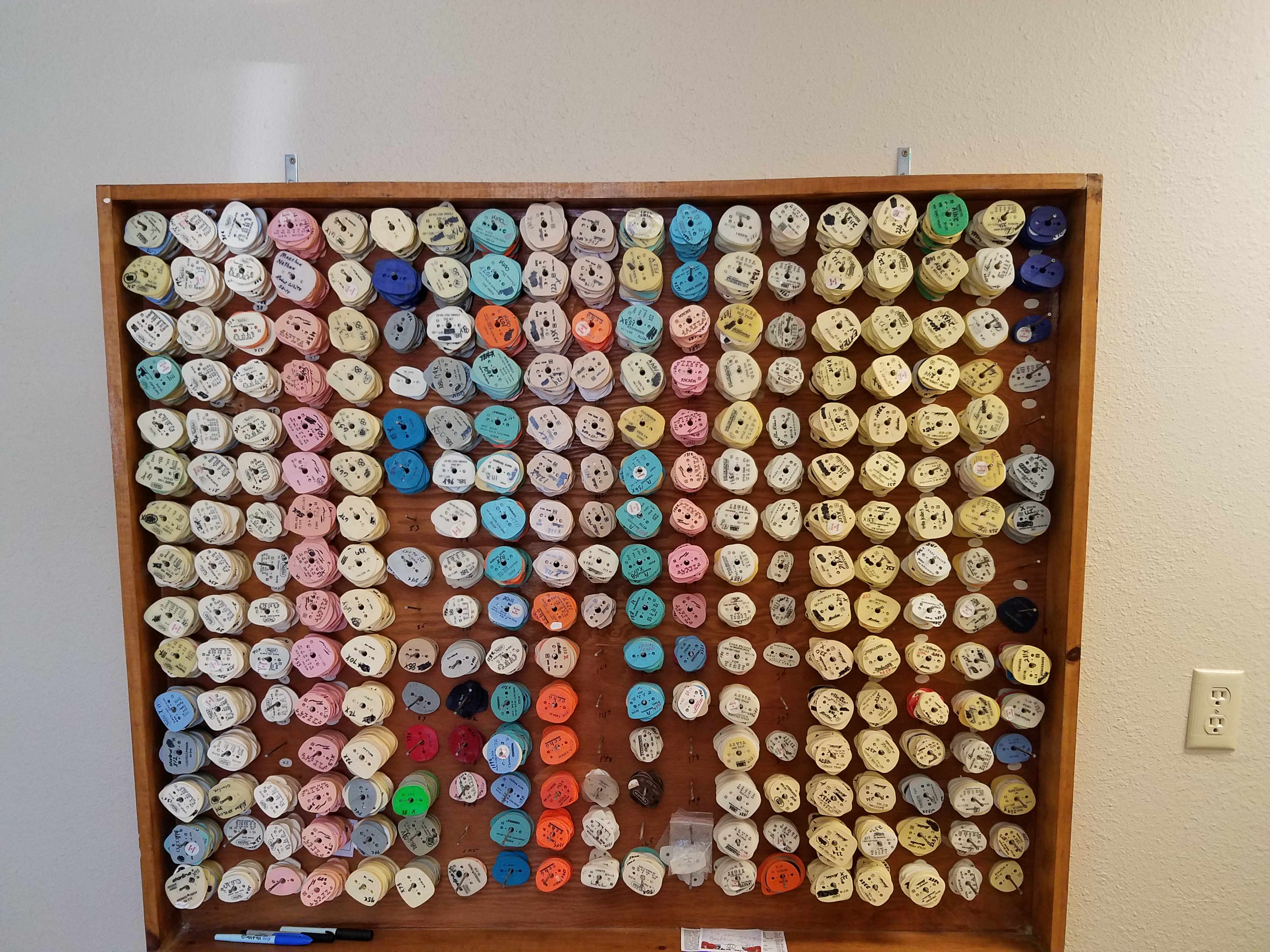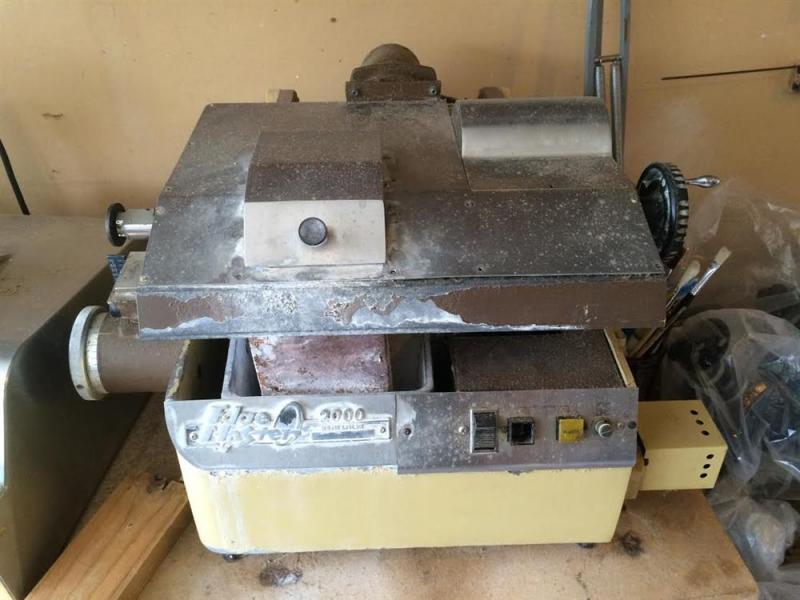Back to: 7: Finishing: The Optician’s Edge
As you know I am not fond of, “When I was young we had to…” but edgers are one of the few tools worth a brief look at their history.
Edgers once were based on patterns. Every frame came with a plastic (or metal) guide which acted as a template for the lens shape. Each pattern would cover the entire range of sizes for each frame.
For instance, if the Patti Thomas 9876 came in a 43, 45, and 47 eye, you would need to adjust the size up or down so the lens turned out the right size. In addition to that, since these were crude machines you also had to hand-size each lens for 1/10mm differences in frame size, material, thickness, etc. You also HAD TO REMEMBER to flip the pattern between cutting the right and left lenses or you ended up with two rights…
Yeah, pretty easy to make a mistake!
Here are some examples of metal patterns:


Here is an image of one of the very first edgers. No plugs on this baby! Yep, that is a hand crank. The lens would be first “cribbed” down by hand. Cribbing used special pliers that broke or nibbled away the glass to get the lens down to roughly the size and shape of what you needed. Note the metal pattern that it is tracing.

You also had to keep the patterns on hand, so each shop had an entire wall of patterns and had to maintain a pattern inventory of some kind so you could find the pattern you needed. This is also lead to making patterns and even bench top pattern cutters. Making a pattern by hand is quickly becoming a lost art.
Check out this beauty! Fifty plus years old and still running the occasional lens!


